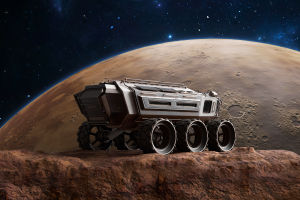Imagine a day in 2027 when humanity takes a monumental leap into deep space. Lykkers, envision the moment a SpaceX Falcon Heavy rocket launches in 2025, carrying the essential components of a groundbreaking lunar space station.
This innovative outpost, named Gateway, will be the first permanent human habitat beyond Earth, orbiting the moon. While astronauts have happily resided aboard the International Space Station (ISS) for decades, Gateway represents a significant expansion of human exploration into the cosmos.
New Habitat
The International Space Station orbits roughly 250 miles above Earth. In contrast, Gateway will circle the moon some 250,000 miles away—about 1,000 times farther. As part of NASA’s Artemis program, Gateway promises to expand human presence, offering a vital platform for science, technology demonstration, and tele-operated missions on the lunar surface.
Artemis Backbone
Launched in 2022, Artemis I sent an uncrewed Orion spacecraft 1.4 million miles around the moon. Artemis II will repeat the trajectory with astronauts on board, and Artemis III plans a lunar landing—first time since Apollo 17 in 1972. Following these, Gateway’s first modules—habitation and power—will arrive in lunar orbit in 2027, laying the foundation for sustainable exploration.
Modular Design
Gateway will begin as a compact, studio-apartment–sized habitat with its power and propulsion element. Future additions—logistics, airlock, and science labs—will enlarge the station to 10–20% of the ISS’s volume by the early 2030s. This step-by-step assembly allows for crewed visits after Artemis IV (circa 2028) and continuous upgrades to support longer stays.
Stepping Stone
More than a moon hotel, Gateway serves as a stepping stone to Mars. Operating 250,000 miles from Earth, it will test autonomous systems critical for deep-space missions. Communication delays to Mars can exceed 20 minutes; mastering Gateway’s self-sufficiency—robotic maintenance, in-situ resource utilization—will sharpen readiness for Martian outposts.
International Collaboration
NASA leads Gateway, but international partners contribute key elements. The European Space Agency provides the habitation module, Canada delivers robotic arms, and Japan supplies logistics. This global effort mirrors the ISS model, fostering political and technical collaboration that strengthens alliances and shares costs across agencies.
Scientific Payoff
Gateway’s labs will study lunar geology from orbit, offering insights into the moon’s origin and its potential resources—like water ice in polar craters. Biological experiments will examine radiation effects on human cells, informing shielding strategies. These discoveries will guide both lunar colonization and Mars mission planning.
Operational Challenges
Operating so far from Earth poses unique hurdles. Without Earth’s magnetic field, astronauts at Gateway face heightened radiation exposure. Early experiments will map cosmic ray levels, driving design of protective habitats and gear. Additionally, micro-meteoroid risks and deep-space communication blackouts demand robust shielding and autonomous systems.
Budget Debates
Critics question Gateway’s price tag and timeline. Some argue that direct lunar surface missions could gather more data, bypassing an orbital stop. Yet Gateway’s defenders highlight its flexibility: a reusable staging point, reducing fuel demands for repeated landings, and enabling broader scientific access across lunar latitudes.
Political Winds
Space programs often shift with changing administrations, leaving projects vulnerable to funding cuts or redirection. However, Gateway enjoys bipartisan support, as multiple presidents have endorsed lunar return efforts. Its multinational framework further insulates it, ensuring continuity even amid geopolitical changes.
Future Growth
As Gateway solidifies, private companies may dock commercial modules for tourism, manufacturing, or media ventures—opening a new space economy. Regular resupply missions from Earth, NASA’s Orion, and commercial crew vehicles will maintain station operations. This evolving ecosystem could mirror low Earth orbit’s commercialization.
Human Experience
Beyond research, Gateway aims to become a livable, functional habitat. Crews planing to test artificial gravity concepts through tethered modules, practice sustainable life-support recycling systems, and cultivate microgravity plant growth. These ventures will refine how humans thrive—and even feel “at home”—in deep-space environments.
Path to Mars
Gateway’s technologies—advanced propulsion, closed-loop life support, autonomous maintenance—will directly inform Mars mission architecture. By living and working in lunar orbit, astronauts will practice procedures for multi-year trips to Mars, honing the skills and systems needed to survive interplanetary voyages.
Conclusion
Gateway stands as humanity’s bold leap into the lunar neighborhood, blending scientific inquiry, international partnership, and commercial opportunity. As we chart this new orbit, we lay the groundwork for life beyond Earth—first around the moon, then onward to Mars and deep space. Lykkers, the gateway to our cosmic future is nearly open; stepping through it will reshape our place in the universe.


